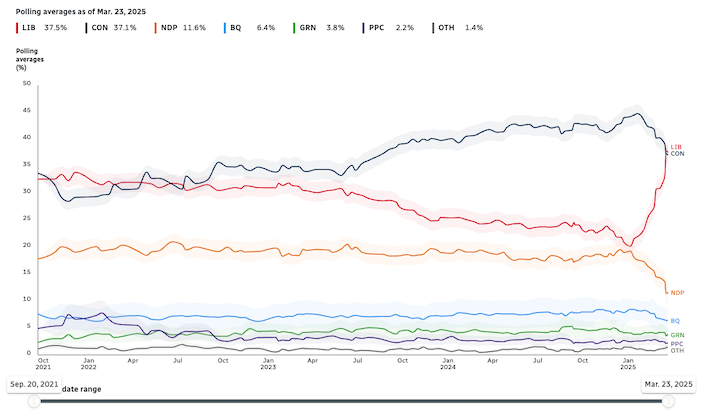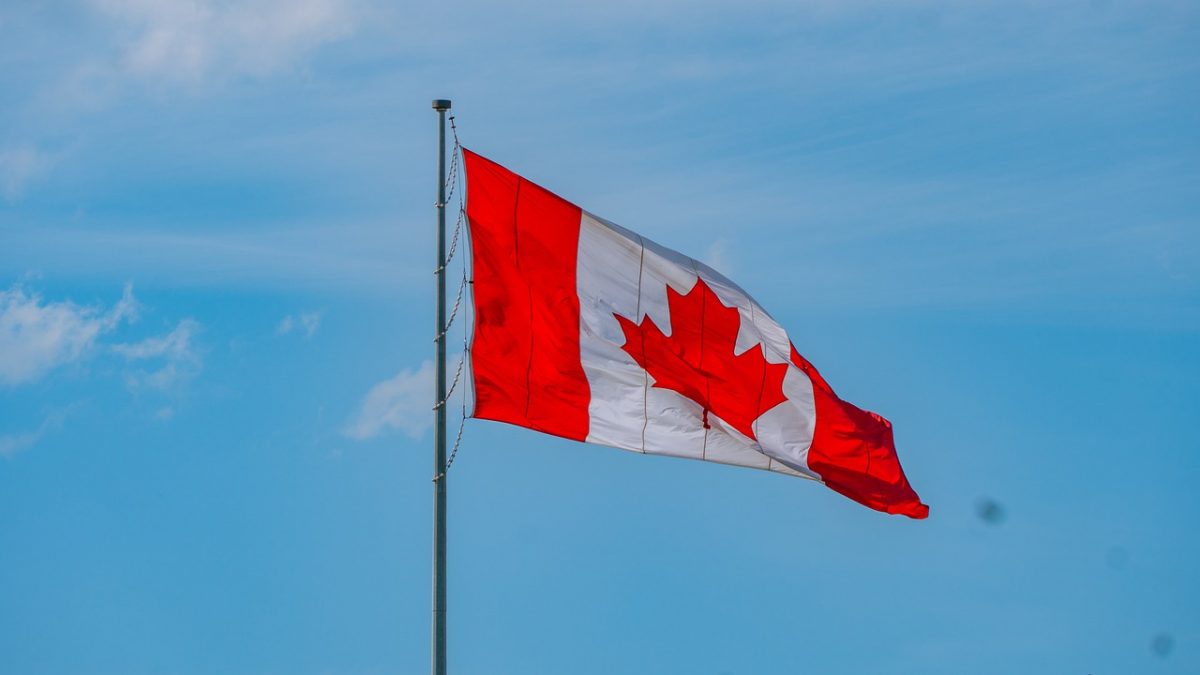Summary
- Domestic discontent: Initially, the Canadian federal election focused heavily on domestic discontent with Justin Trudeau’s policies, allowing Conservative leader Pierre Poilievre to gain significant traction.
- Mark Carney: Trudeau’s resignation and the subsequent appointment of Mark Carney, a former central banker, revitalised Liberal fortunes by projecting an image of economic expertise and crisis management.
- Trump’s rhetoric: US President Donald Trump’s aggressive trade threats and rhetoric about annexation dramatically shifted the election focus from domestic concerns to protecting Canadian sovereignty and economic independence.
- External threats: Trump’s actions prompted a “rally-around-the-flag” effect, benefiting Carney’s Liberal Party as voters prioritised leadership strength against external threats.
- Poilievre’s recalibration: Poilievre faced difficulties adapting his message to address Trump’s provocations effectively and struggled with perceptions linking him ideologically to Trump, undermining his campaign’s momentum.
Details
As Canada prepares for its federal election on April 28, 2025, the political landscape has undergone a dramatic transformation, influenced by both domestic dissatisfaction and unexpected international tensions. Initially, the election appeared set to hinge on domestic issues, primarily driven by growing discontent with incumbent Prime Minister Justin Trudeau’s Liberal government. Trudeau’s declining popularity was rooted in criticisms about rising costs of living, housing affordability, and perceptions of governmental ineffectiveness.

Against this backdrop, Conservative Party leader Pierre Poilievre surged, positioning himself as a proponent of “common sense politics,” criticising Trudeau’s policies, and championing a message encapsulated by his slogan, “Canada is broken”. Poilievre’s early momentum was robust, appealing strongly to voters frustrated by domestic issues and governmental mismanagement.
However, two pivotal developments dramatically altered the election’s trajectory. Firstly, Trudeau’s resignation and subsequent replacement by Mark Carney marked a significant shift in the Liberal Party’s prospects. Carney, a political novice with a background as the former governor of both the Bank of Canada and the Bank of England, rapidly differentiated himself from Trudeau. His financial expertise and crisis-management credentials appealed widely to Canadians, particularly in the face of looming economic uncertainties. He swiftly abandoned unpopular Trudeau-era policies, including scrapping the consumer carbon tax and a proposed increase to the capital gains tax. His strategy successfully repositioned the Liberal Party, which had previously trailed significantly in the polls.

Secondly, the aggressive rhetoric and trade threats from US President Donald Trump, including provocative suggestions of annexing Canada, reshaped voter priorities dramatically. Trump’s actions created a surge of Canadian nationalism, sparking a “rally-around-the-flag” effect, which significantly benefited Carney and the Liberals. This external threat shifted voter focus away from domestic concerns to international affairs, turning the election into a referendum on who could best protect Canadian sovereignty and economic interests.
This campaign advertisement, featuring Canadian actor Mike Myers (Austin Powers, Wayne’s World) is an example of how the Carney campaign is leveraging Canadian patriotism.
In response to Trump’s provocations, Poilievre had to swiftly recalibrate his campaign strategy. His original slogan, “Canada is broken,” risked appearing anti-patriotic amidst growing national unity. Thus, he pivoted to a more nationalistic stance under the new slogan “Canada First”, emphasising Canada’s sovereignty and economic independence. Poilievre advocated for retaliatory tariffs against the US and promoted fast-tracking permits for resource and energy projects to enhance Canadian economic self-reliance.
Yet, Poilievre’s adjustments faced considerable challenges. His previous populist rhetoric and confrontational style, while effective against Trudeau domestically, drew uncomfortable comparisons to Trump himself. Trump’s erratic statements, at times dismissing Poilievre as “stupidly no friend of mine,” further complicated Poilievre’s effort to clearly distance himself from the former US President. Analysts highlighted a lack of clarity in Poilievre’s plans to address Trump’s threats effectively, weakening his appeal as the crisis unfolded.
Conversely, Carney, leveraging his experience as a seasoned economic crisis manager, projected an image of calm strength and capability, significantly appealing in a time of uncertainty. Polls indicated that voters increasingly viewed him as better equipped than Poilievre to confront Trump’s aggressive trade policies and safeguard Canadian interests.
This unexpected convergence of leadership change and international crisis underscores the inherent unpredictability and complexity of political campaigning. Despite meticulous planning and strategising, campaign dynamics can be dramatically reshaped by unforeseen external events. The Canadian 2025 election serves as a potent reminder that political success often hinges as much on adaptability to crises as on deliberate campaign strategies.
